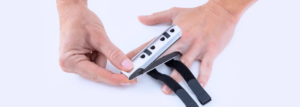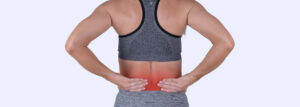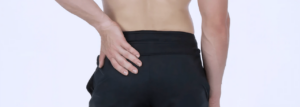De Quervain’s Tenosynovitis Pain
What is it? Causes Symptoms Recovery Finding Relief
If you experience pain in the part of your wrist closest to your thumb, you may have a condition known as De Quervain’s Tenosynovitis (a.k.a. texting thumb). This condition causes pain and discomfort when using the thumb, twisting and turning the wrist, or when making a grabbing fist motion. There are many factors that can contribute to developing De Quervain’s Tenosynovitis and there are many ways to treat and manage this painful condition. Keep reading to learn more about the causes and cures for De Quervain’s Tenosynovitis.
What is De Quervain’s Tenosynovitis?
Also known as De Quervain’s Stenosing Tenosynovitis, or texting thumb, this condition results from inflammation or compression of the tendons at the base of the thumb.
Normally, the two tendons in the wrist and lower-thumb slide effortlessly through a tunnel that connects to the thumb base. In people with De Quervain’s Tenosynovitis, the exterior (or sheath) of these tendons can thicken and swell. Over time, this leads to pain and restricted movement.
De Quervain’s Tenosynovitis Causes
Several different mechanisms can lead to De Quervain’s Tenosynovitis, including the following:
- Long-term overuse of the wrist, especially when exercising or using a computer mouse
- Repetitive motions such as gripping, clenching, or wringing
- Rheumatoid arthritis, a form of inflammatory arthritis
- Physical trauma to the wrist that results in scar tissue
Risk Factors
You are more likely to get texting thumb if one or more of the following apply:
- You are between 30 and 50 years of age
- You are a woman (the condition affects women up to ten times more than men)
- You are pregnant
- You look after a baby, as repeatedly lifting children can cause undue pressure on the thumbs and tendons in the wrist
- You engage in activities that involve repetitive strain on the wrist and hand (i.e. typing, chopping, or cooking)
De Quervain’s Tenosynovitis Symptoms
The primary symptom associated with De Quervain’s Tenosynovitis is pain at the base of the thumb. The condition can also cause:
- Swelling around the base of the thumb
- Limited ability to move the thumb and wrist, especially when grabbing or pinching an object
- A lack of fluidity in the thumb’s movement (a sensation that the thumb is getting stuck)
Untreated De Quervain’s Tenosynovitis can lead to the spread of pain up through the thumb, or into the forearm. Long term, it may impact your range of motion and hand dexterity.
Diagnosis
In addition to asking about your symptoms, a doctor will often use the De Quervain’s Tenosynovitis test to make a diagnosis. Also known as the Finkelstein test, it involves:
- Bending the thumb across the palm and closing the fingers over the thumb.
- Then, bending the wrist toward the little finger to cause a stretch in the wrist near the base of the thumb.
If you experience pain when carrying out this test, you most likely have De Quervain’s Tenosynovitis.
Recovery from Texting Thumb
The length of time it takes to recover from De Quervain’s Tenosynovitis depends on many factors including:
- How long you had the condition before seeking treatment
- The severity of the symptoms
- Treatment techniques used
- Your general health and mobility
If you use a wrist brace (if needed) and follow the treatment plan laid out by your doctor and physical therapist, you may recover in as little as four to six weeks. Some people get better even sooner, although people who delay treatment can expect longer recovery times.
Similarly, if surgery is needed for more severe cases (highly unlikely) then recovery time varies from person to person. Those who follow their post-surgery exercise program may recover quicker than those who don’t.
Finding Relief from Thumb Pain
De Quervain’s Tenosynovitis is usually treatable, especially if you act fast and follow your treatment program closely. For the best chance of a quick recovery, be sure to rest your hand whenever possible, provide it with additional supports such as a thumb brace or splint, practice good wrist and hand biomechanics with daily activities, and engage in regular massage and hand exercises. Remember, many of these techniques can also be used preventatively to ensure you never have to deal with the pain of De Quervain’s Tenosynovitis.






